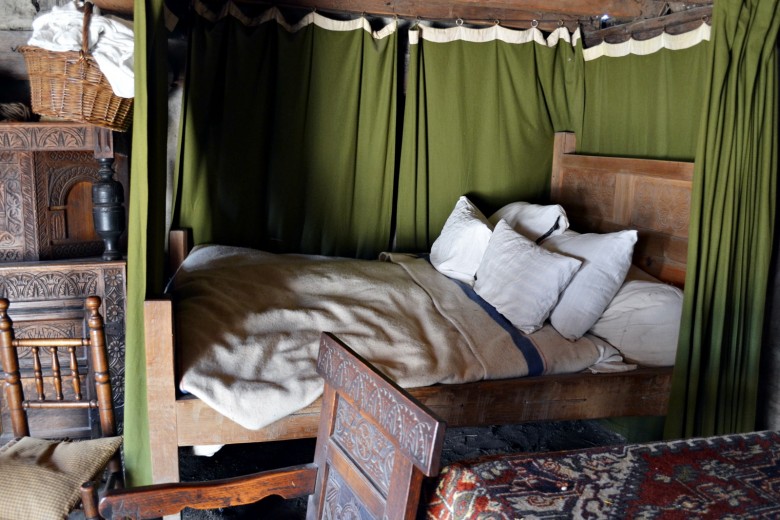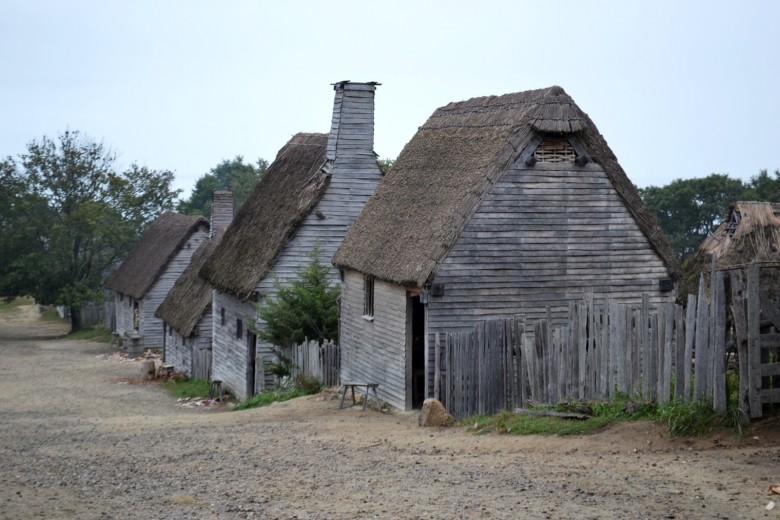Magazine
What’s It Like to Be a Pilgrim at Plimoth Plantation?
Think your commute is bad? Kate Moore’s 40-minute drive from Cape Cod to Plymouth sets her back nearly 400 years.

Coffee By Design | Portland, Maine
Photo Credit : Katherine Keenan
Photo Credit : Joel Laino
What’s It Like to Be a Pilgrim at Plimoth Plantation? | Ask the Expert
Study Up
At the start of every new season (or character), Moore makes a timeline of the major events in her character’s life: where she grew up, when she moved, whom she married. To develop historical context, reading primary-source materials–Of Plimoth Plantation by William Bradford and by Edward Winslow, for example–is a must. “Being an interpreter is less like being an actor memorizing lines,” Moore says, “and more like a professor teaching the same subject each year.”Speak the Language
The inhabitants of 1627 New Plimoth represented 17 different regional dialects, so getting the speech down requires a lot of practice. As part of their pre-season training each spring, interpreters listen to tapes and gather in small groups to rehearse aloud. That’s important, Moore says: “I want to make it come alive for others the way it has for me.”
Photo Credit : Aimee Seavey
Stay Patient
“You must like people and you must like talking to people,” Moore says. “If you can’t get that part right, you’ve got nothing.” Serving different visitors every day means a lot of repetition for the interpreters. The same questions, the same jokes, the same routine: Keeping things fresh can be a challenge. “One of the things you learn early on to save your own sanity,” Moore notes, ” is to come up with different responses” for common questions.Dress the Part
One of the best parts of her job, Moore says, is that she gets paid to play dress-up, one of her favorite childhood games. “We have sort of a running joke that we’re all just in it for the clothes,” Moore says. “I don’t think I’d do this if it weren’t for the role playing and the clothes. But they’re not always very comfortable, especially in summer.”
Photo Credit : Aimee Seavey





Yes, it would be great fun to be an interpreter at Plimoth. When I was teaching 3rd graders, we read about the Pilgrims in an old reader, “Roads to Follow”. The stories they read were based on the writings of William Bradford. The culminating activity was when the other 3rd grade teacher and I made “pilgrim food” for the kids to taste. We tried to be pretty authentic. Now I am an interpretive ranger for a national park. I often take the persona of a person from the past. When visitors ask about something modern–like cell phones–I answer with, “I’m sorry, I am not familiar with that.” It’s great fun to dress in clothes of an earlier time and for a while become someone else.
Very well written and I have been to Plymouth Platation, great place
Yes, I thought of moving back to Duxbury in 1977 and applying for a position at Plymouth Plantation. Fate kept me here in Florida.
Yes, I’ve been to Plymouth Plantation several times over the many years. Recently I dressed as a Pilgrim and walked in a “Progress” for the first time. I happen to have a rope bed that I would like to donate to Plymouth Patuxet if they could use it.